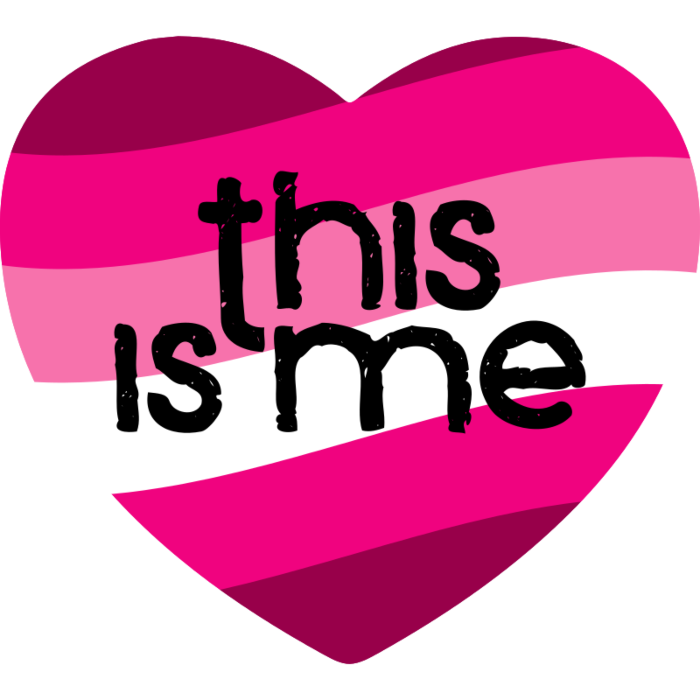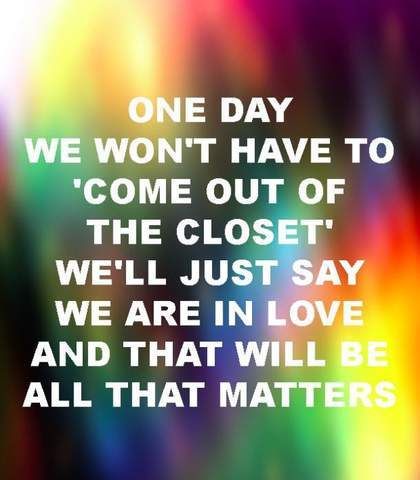Coming out is a life long process of understanding, accepting, and acknowledging your identity as lesbian, gay, bisexual, transgender, queer (LGBTQ) or a similar identity. Coming out includes both exploring your identity and sharing that identity with others. The first person you have to come out to is yourself.

Coming out happens in different ways and occurs at different ages for different people. College, in particular, is often the time in which students begin to explore their identities and come out to peers, friends, and family members.
We all deserve the right to live our lives genuinely, completely and honestly. Race, ethnicity, language, religion, culture, gender expression, sexual orientation and gender identity should never be barriers to us living our full lives. For LGBTQ people, coming out is often a significant part of reclaiming this right and living in our identity publicly.
Coming out is a process of understanding, accepting, and valuing your sexual orientation/identity. It involves both exploring your identity and sharing your identity with others. Coming out can be a gradual process or one that is very sudden. The first step usually involves coming out to yourself, often with a realization that feelings you’ve had for some time make sense if you can define them as gay, lesbian, bisexual, transgender or queer.
Coming out can be a very difficult process. Our society strongly enforces codes of behavior regarding sexual orientation and gender identity, and most people receive the message that they must be heterosexual and act according to society’s definition of their gender. For gay, lesbian, and bisexual persons, there may be a sense of being different or of not fitting in to the roles expected of you by your family, friends, workplace or greater society. Coming out involves facing societal responses and attitudes toward LGBTQ people. You may feel ashamed, isolated, and afraid.

Although coming out can be difficult, it can also be a very liberating and freeing process. You may feel like you can finally be authentic and true to who you are. You may find a whole community of people like you and feel supported and inspired. Even if it’s scary to think about coming out to others, sometimes the reward can be worth the challenge that coming out entails.
Individuals do not move through the coming out process at the same speed. The process is very personal. It happens in different ways and occurs at different ages for different people. Some people are aware of their sexual identity at an early age, and others arrive at this awareness after many years. Coming out is a continuing, sometimes lifelong, process.
Once you accept that you’re lesbian, gay, bisexual, transgender or queer, you can decide to be out to others or to stay “in the closet.” You are the only person who can decide when and how it is safe to come out. You may decide to come out in one part of your life and not in another. For example, some people are out to their families but in the closet at work; some people are out at school but in the closet with their families.
THE CASS THEORY

The Cass Theory, developed by Vivian Cass (1979) is a six stage model that describes the developmental process individuals go through as they consider and then acquire a homosexual identity. This model includes lesbian, gay and bisexual identities. You may find yourself in one of these stages. Know that what you are experiencing is completely normal and that many, many others have had similar experiences.
Stage 1 – Identity Confusion: You begin to wonder whether you may be homosexual. Along with other thoughts and feelings, you may experience denial and confusion.
Stage 2 – Identity Comparison: You accept the possibility that you may be gay and face the social isolation that can occur with this new identity.
Stage 3 – Identity Tolerance: Your acceptance of your homosexuality increases, and you begin to tolerate this identity. Although confusion and distress concerning your sexual orientation decreases, you may feel increased isolation and alienation as your self-concept becomes increasingly different from society’s expectation of you. In this stage, you often begin to make contact with members of the LGB community.
Stage 4 – Identity Acceptance: You have resolved most of the questions concerning your sexual identity and have accepted yourself as homosexual. You have increasing contact with the LGB community.
Stage 5 – Identity Pride: You begin to feel pride in being part of the LGB community and immerse yourself into LGB culture. In turn, you have less contact with the heterosexual community. Sometimes you may actually feel angry with or reject the heterosexual community.
Stage 6 – Identity Synthesis: You integrate your sexual identity with other aspects of your self so that it is just one part of your whole identity. The anger you may have felt toward the heterosexual community or the intense pride you may have felt in being homosexual decreases, and you can be your whole self with others from both groups. You feel more congruence between your public self and your private self.
ADDITIONAL CONSIDERATIONS
In coming out to others, consider the following:
Pick someone who you feel is very supportive to be the first person you come out to.
When you come out, think about what you want to say and choose the time and place carefully based on what will be most safe and supportive.
Be prepared for an initially negative reaction from some people. Some individuals need more time than others to come to adjust to what they have heard from you.
Don’t give up hope if you don’t initially get the reaction you wanted. Remember that you have the right to be who you are, and to be out and open about all important aspects of your identity including your sexual orientation. In no case is another person’s rejection evidence of your lack of worth or value.
If you have already come out to others whom you trust, alert them that you are coming out and make time to talk afterward about how things went. Find trusted allies who can help you cope with your experiences.
Get support and use the resources available to you.
